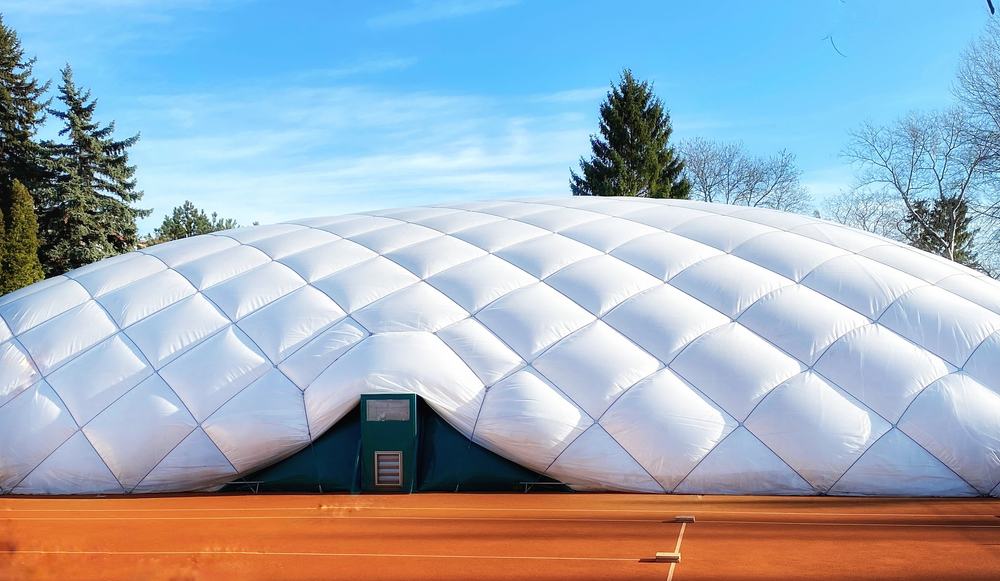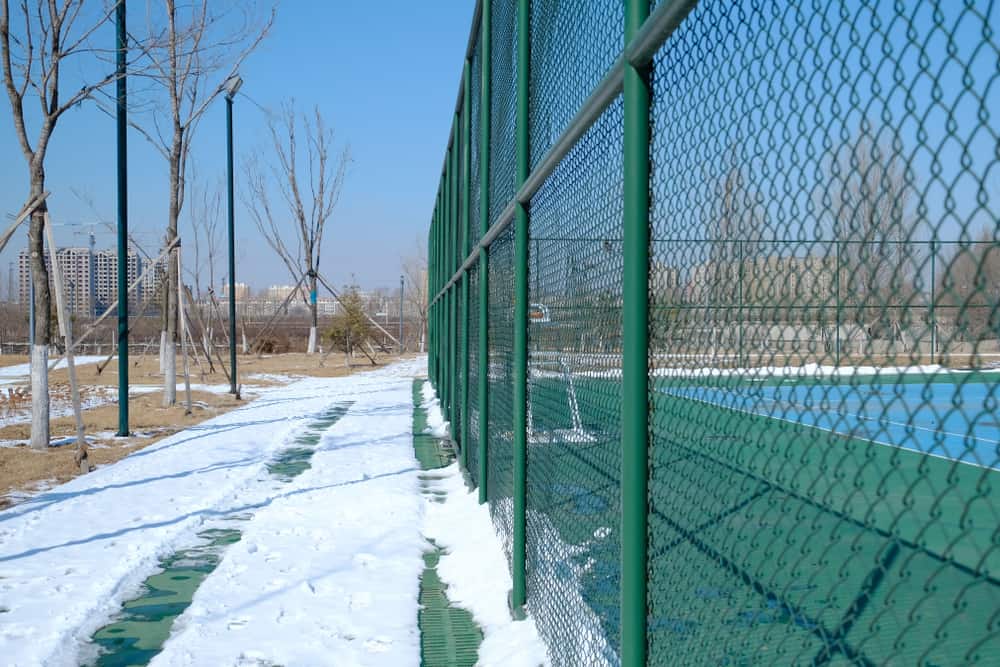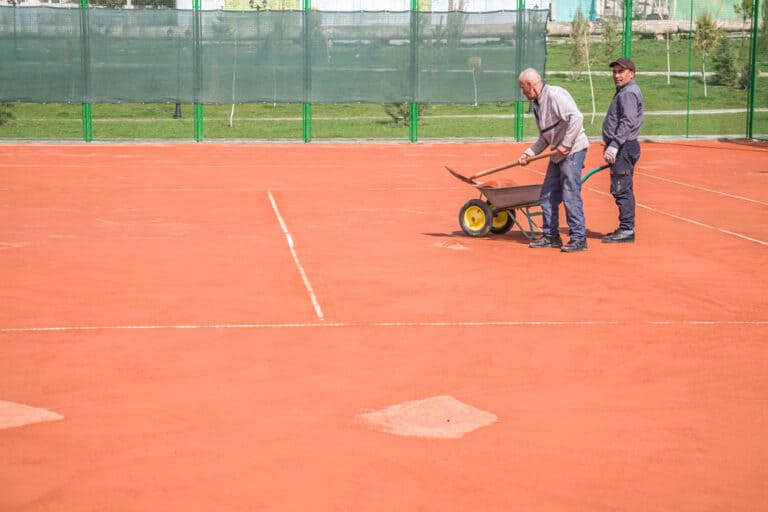How Do You Winterize A Tennis Court?
A tennis court is like a baby you have to look after. It may not need 24-hour maintenance, but putting in the effort will lead to many years of use at a low cost. One way is to winterize your tennis court and prepare it for the colder months.
How do you winterize a tennis court?
- Remove the windshields and investigate the fencing
- Remove or lower the nets
- Remove or safeguard the lines
- Treat and clean the surface
- Fill up the cracks
- Remove snow correctly
- Cover the tennis court
- Store outside furniture
- Put up a sign
Winterizing is to prepare the court for the off-season, ensuring as minor damage as possible during the wind and rain and making the work less for the season’s start. We winterize a tennis court to act proactively and keep the courts safe. A tennis court costs much money to build, and if you maintain and look after it, the costs involving any repairs will be minor.
1. Winterizing A Tennis Court: Windshields And Fencing
When preparing your tennis courts for winter, whether they will be closed or used on a sunny winter’s day, you have to remove the windshields and look at the fencing.
The harsh winds can damage the windshield, and because you won’t be using them, it is better to take them down. Explore the windshields and look for any areas that might need repairing or if it is necessary to replace them. If replacement is the answer, order new ones and ensure you have them in storage and ready to put up in the Spring.
The fencing might need touch-ups and repairs. Ensure the fences are in good condition and do whatever is required to get the rails and gates in excellent working condition.
It would be clever to mark the windshield and fence where each windshield fits. It will make it easier for you when the time comes to put the windshields back up.
2. Winterizing A Tennis Court: Nets
Looking after the tennis net is one of the crucial elements of maintenance. The net is highly strung, and not removing it before the harsh weather or letting it down will expose it to strong winds and rain. The weather will ultimately cause constraints to your net, leading to replacement that could have been prevented.
The best option for tennis net protection would be to remove and store it in a dry place. Then, inspect the net and make sure there is no maintenance. If you know there are a few days in winter sunny enough to hit the court; you can leave the net on the court or lower it. This way, installing the net for a day and taking it down again will be easy.
3. Winterizing A Tennis Court: Lines
The lines on some courts can be rolled up and stored in a dry place over the winter. The problem is that when you need to put it back, the position of the lines might have faded entirely by the weather.
Another way to protect the lines would be to place objects on them to keep them intact. Suppose you feel the lines need to be replaced; you can leave them as is and order new ones to replace them with as soon as winter passes.
4. Winterizing A Tennis Court: Surface
To prepare the court surface for winter and extend the lifetime of your court, you must pay attention to any stains and debris that might have built up on the court. Use a mix of one cup of bleach to one gallon of water.
Wet the areas with stains and mold, wait a few minutes, and use a soft brush to remove the stains. Next, hose down the area to clean it from leftover dirt and cleansing mix. You can also use a broom to clean the court from leaves.
5. Winterizing A Tennis Court: Filling Up The Holes
One of the critical steps in winterizing your tennis court would be to keep the water out. You will have to investigate the entire surface and fill up any cracks you find. This way, you keep the court safe against water and snow that might penetrate the surface.
When removing the net, remember to close the post holes and ensure it is fully enclosed to prevent anything from entering the gaps.
6. What If It Snows On The Tennis Court?
You might want to immediately remove the snow from your tennis court when it snows. However, the best would be to wait it out a little, let the winter sun do its job to melt the snow, and then you can clean it up as it melts. If you cannot wait for the last bits to melt, you can use a plastic shovel to lift the ice from the surface carefully.
7. Cover The Tennis Court For Winter
Not everyone is keen to cover a court for the off-season. However, a cover will keep the court safe during unpredictable weather and save you time and money to get the court ready again after winter. Invest in an affordable cover, and it will make winterizing easier.

8. Store The Tennis Court Furniture In A Dry Place
All the benches, umpire seats, and players’ seats should be wiped down, painted if necessary, and stored in a dry, safe place. Thus, when the new season starts, you will have fresh, good-looking furniture to compliment your well-maintained court.
9. Put Up A Sign To State That The Tennis Court Is Closed
After you winterize the court and are ready to close it for the season, put up a sign to inform people that it is closed. Lock the gate to prevent someone from coming onto the court when there is no supervision.
Things To Avoid When Winterizing A Tennis Court
There are some things to avoid when you winterize a tennis court. These things won’t always cause harm, but the chance they can is there.
- Avoid using a pressure washer on a tennis court.
- Do not keep your windshields up. They will indeed be damaged.
- Avoid using harsh chemicals to clean the court. These can cause problems for players later who might inhale particles.
- Do not use metal shovels to remove ice, as this will damage the court’s surface.
Conclusion
Winterizing might be hard work, and you will have expenses. Still, it is a way to maintain your tennis court for many years of fun, competitions, and sculpting pro tennis players.







